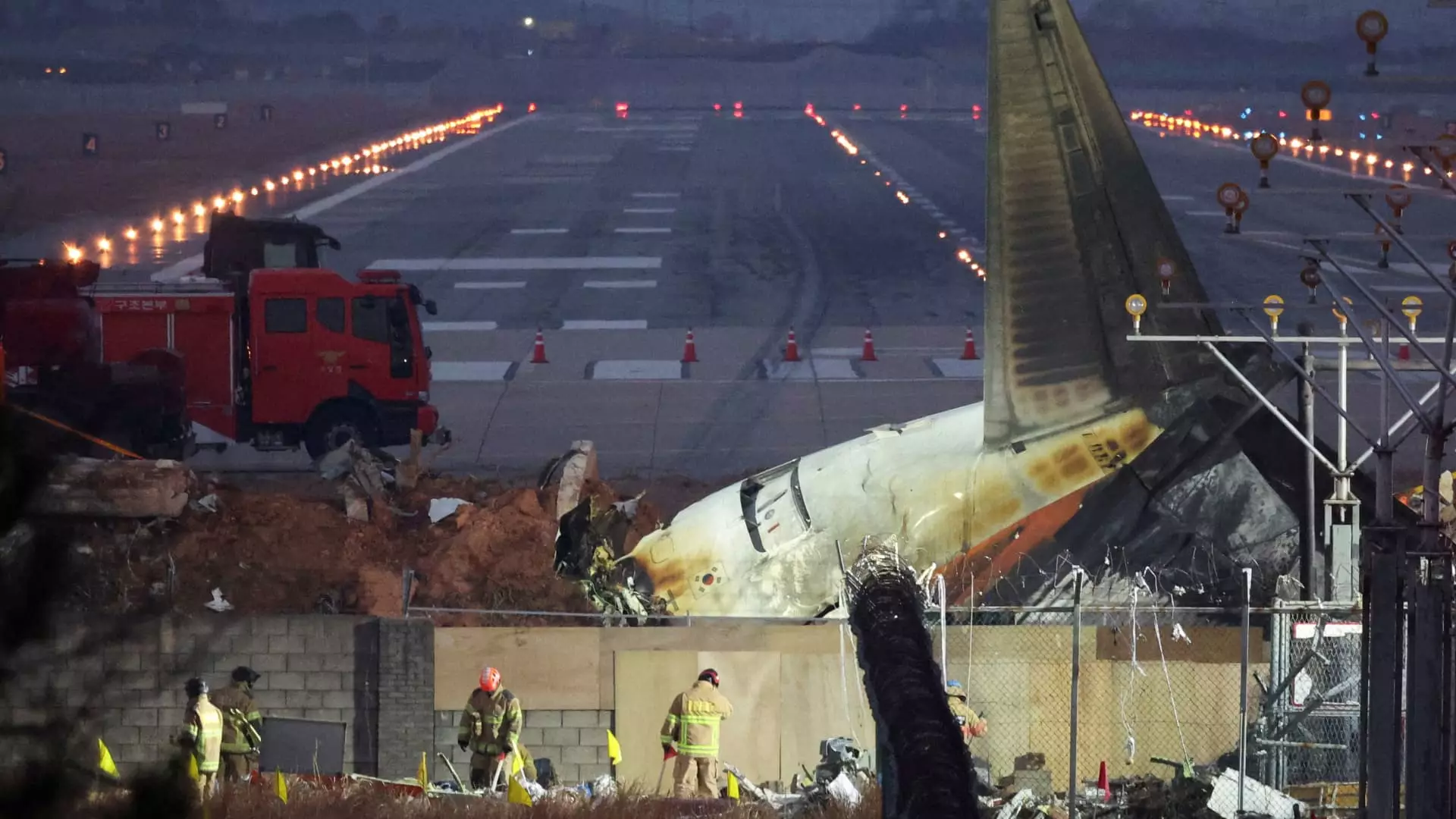In a devastating incident on a Sunday morning, Jeju Air Flight 7C2216, a Boeing 737-800, met a tragic end, resulting in the deaths of 179 passengers and crew members, leaving only two survivors. The aircraft had just completed an overnight flight when it failed to execute a safe landing, ultimately crashing into a mound of dirt and a concrete wall situated beyond the runway’s end. This catastrophic event has ignited serious discussions within the aviation community regarding potential design flaws and the adequacy of safety infrastructure surrounding airport runways.
One of the critical focuses of the investigation is the airport’s design. Experts have noted that the positioning of a dirt mound and a concrete wall just past the runway could have significantly hindered the aircraft’s ability to stop effectively. Todd Curtis, an experienced aviation safety engineer, highlighted that such a barrier made it challenging for the plane to decelerate upon landing. The barriers positioned at runway peripheries are intended to enhance safety, yet the nature of this particular installation raises questions.
Further analysis reveals a crucial aspect of airport design that may have played a role in this disaster. Barriers designed to absorb impact, known as engineered material arresting systems (EMAS), are utilized at several airports worldwide to manage runaway aircraft and prevent catastrophic outcomes. Unlike the barrier encountered by Jeju Air Flight 7C2216, EMAS is constructively intended to break apart on impact, thereby reducing the risk of severe injuries and fatalities. The absence of such life-saving systems at Muan International Airport acknowledges a significant oversight in the airport’s safety protocols.
Investigating the Crash Causes
As the investigation into this incident begins, authorities are meticulously examining numerous factors that may have contributed to the crash. Initial reports hint at the possibility of a bird strike as a precursor to engine malfunction, leading to the tragic outcome. This hypothesis, while plausible, is still under thorough scrutiny, given the complexity and intertwining nature of aviation accidents.
Moreover, the cockpit voice recorders, maintenance logs, and crew scheduling patterns will be instrumental in piecing together the final moments leading to the disaster. Experts warn that while preliminary findings might indicate specific issues, the comprehensive investigation will take months or even longer to reach a definitive conclusion about causality.
The loss of life in this incident has sparked urgent conversations about enhancing safety measures at airports. Aviation safety consultants stress that infrastructure improvements are necessary to prevent similar tragedies from unraveling in the future. Comprehensive assessments of airport design, particularly regarding runway end barriers, are paramount.
While details surrounding the flight incident are still emerging, it is imperative for the aviation industry to reflect on this tragedy critically. Learning from the elements that contributed to the accident, particularly focusing on superior design and effective safety measures, will be crucial in minimizing risks for future flights. The aviation community must prioritize evolving safety standards to adapt to new challenges, ensuring that such a heartbreaking loss of life is not repeated.


Leave a Reply